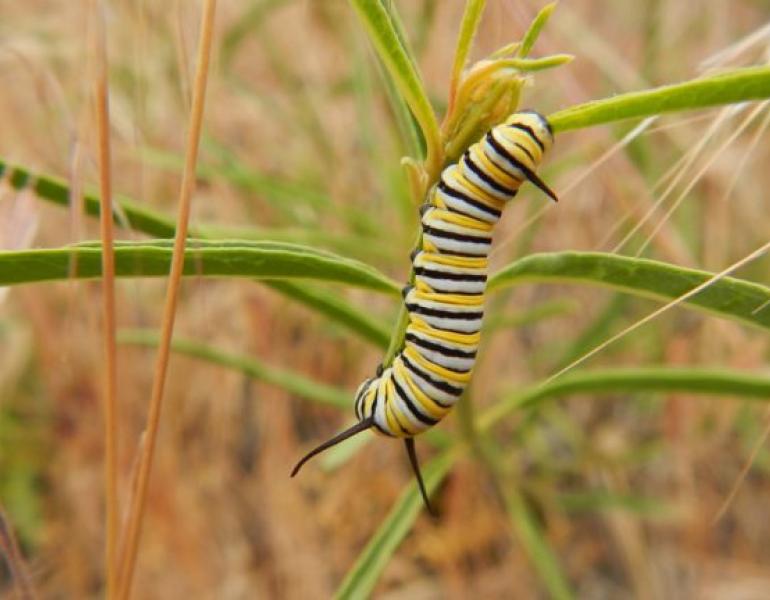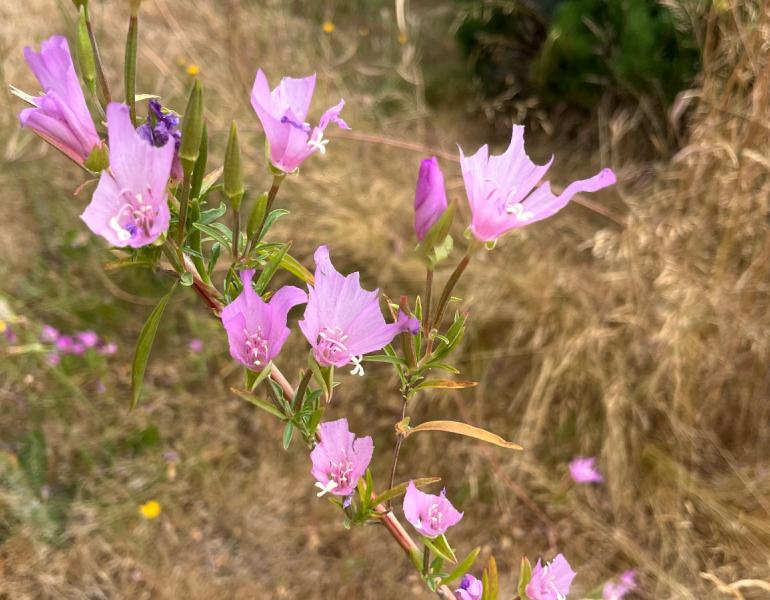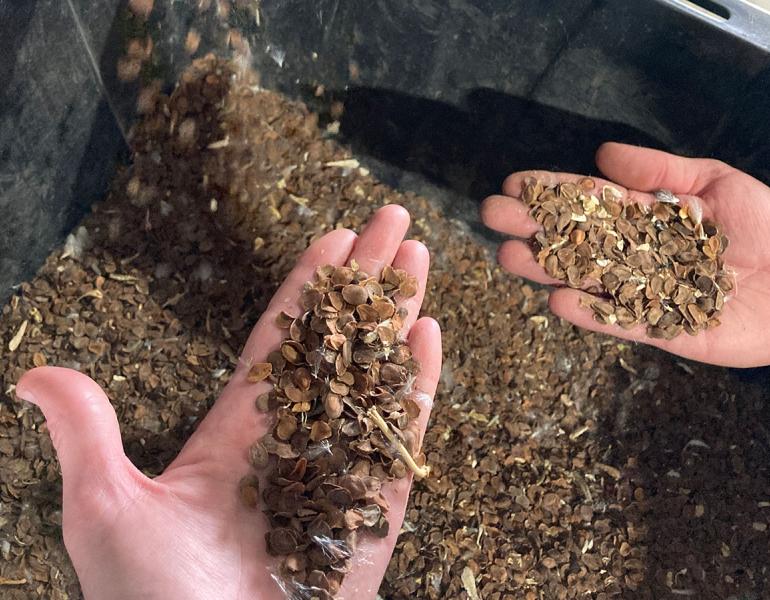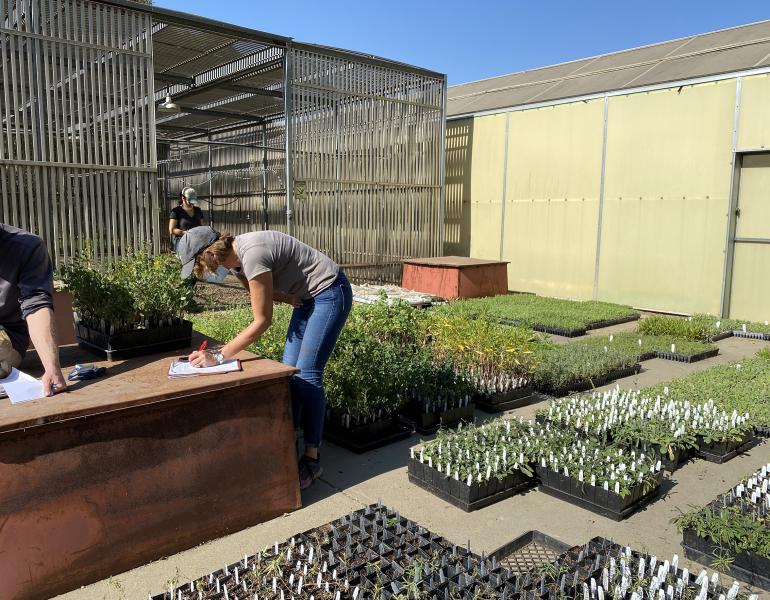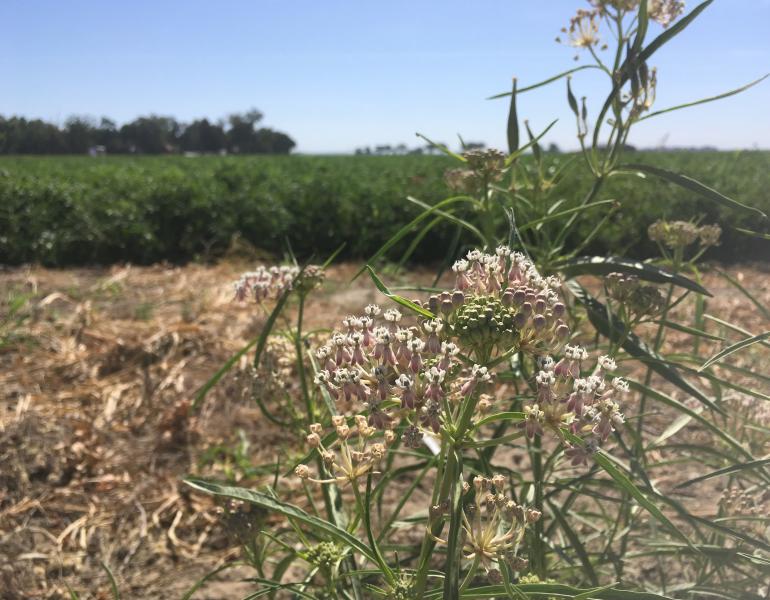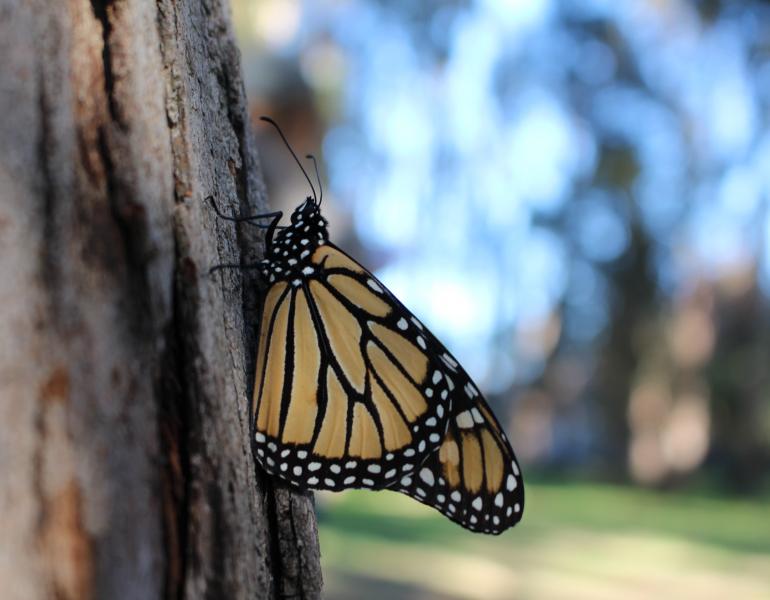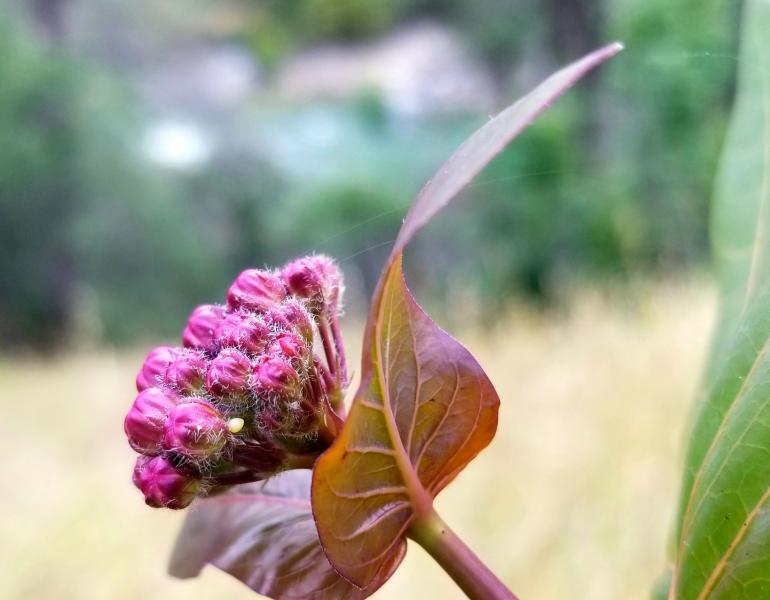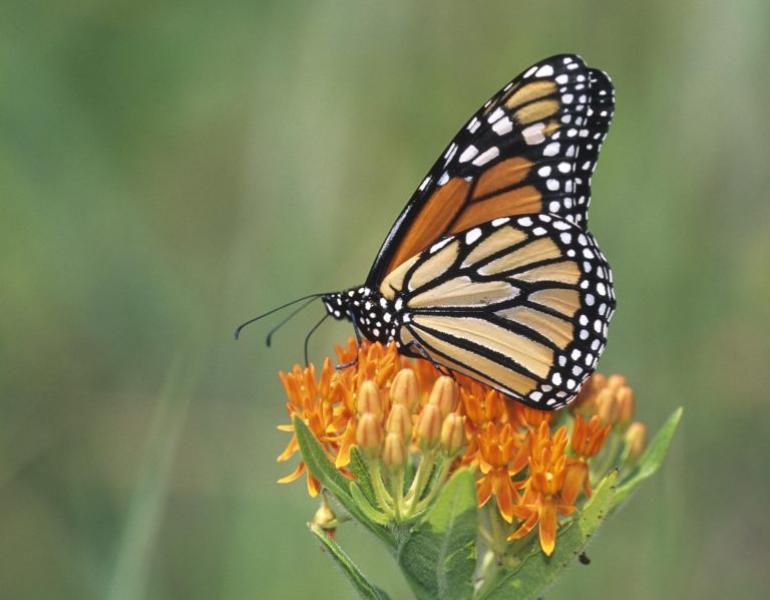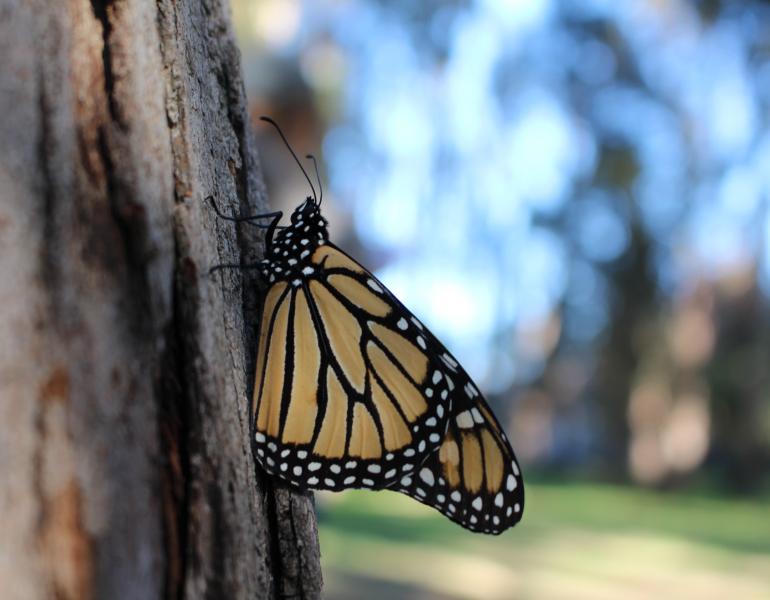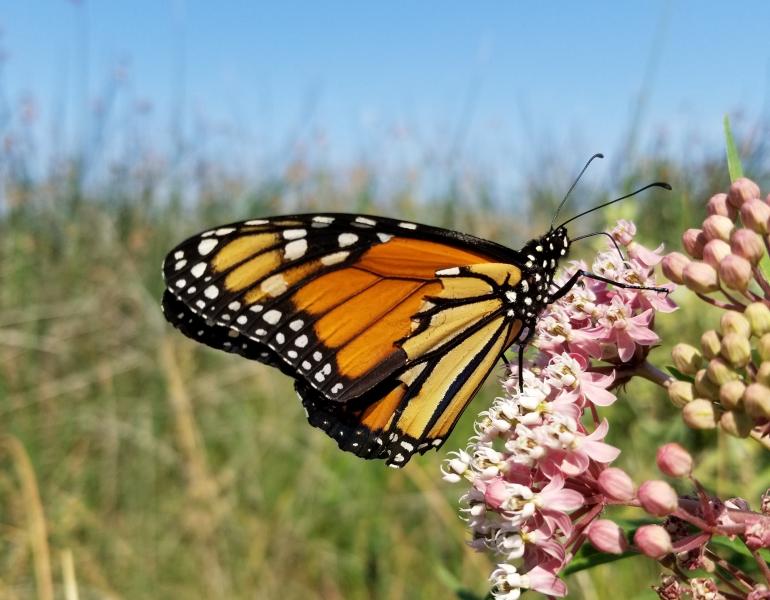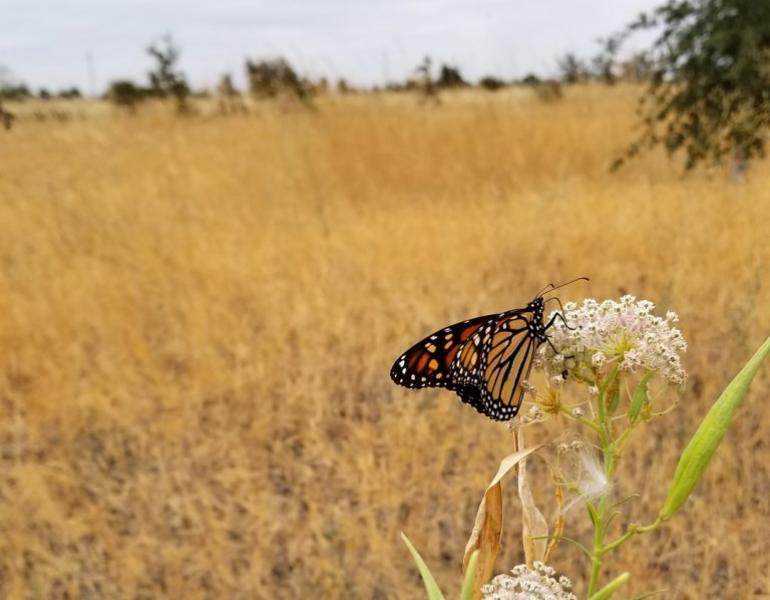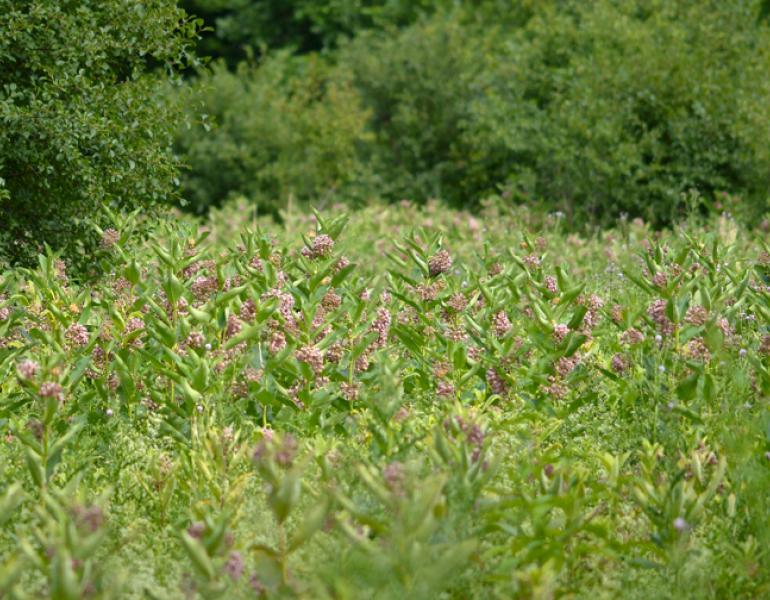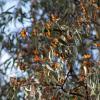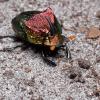Harvesting local milkweed seed for later planting is a great way to increase monarch breeding habitat. We'll teach you how to harvest and separate the fluff from the good stuff.
Milkweed
Keep Monarchs Wild: Why Captive Rearing Isn’t the Way to Help Monarchs
Instead of rearing—which is risky and unproven in helping monarchs—we should focus on more effective, science-backed ways to conserve these glorious wild animals.
Nature Notes: Snapshots of the Wildlife in our Gardens
Members of the Xerces Society’s pesticide reduction team share fun and fascinating observations of invertebrates in and around their yards and gardens.
Growing the Supply of Hard-to-Find Milkweeds
Great Valley Seed shares the process of growing rare but important milkweed species to supply them for the first time.
Why Monarchs Need Early-Season Milkweeds
Western monarchs need milkweed for breeding as soon as they leave their overwintering sites. That's why we partnered on a project to make early-season native milkweed more available in California.
Pollinator Conservation Program Digest – December 2020
This edition focuses on work done across the country to support monarch butterflies and other pollinators. Jessa Kay Cruz describes how Xerces supports groups in California undertaking habitat creation projects, and Jennifer Hopwood presents a series of fact sheets about milkweeds, part of a nationwide project to provide information to roadside managers.
Science Notes: How Pesticide Sampling Can Help Restore Imperiled Western Monarchs
California’s Central Valley is critical breeding habitat for migrating western monarchs. In partnership with the University of Nevada, Reno, Xerces scientists tested milkweeds growing in the valley for pesticides. Sixty-four different pesticides were found across the samples, with an average of nine pesticides per sample.
Thanksgiving Count Shows Western Monarchs Need Our Help More than Ever
The western monarch population remains at a critical level. With some luck and a lot of hard work, we have hope that we can save this incredible migration.
DeWind Alumnae Publish Three New Research Papers about Monarch Butterflies
Together, these publications contribute to our growing understanding of how human actions can hurt—or help—monarchs.
Community Science Powers New Western Monarch Studies
Western monarch researchers and community scientists have been busy, contributing information vital to understanding the situation facing this imperiled population.
New iNaturalist Project Makes it Easier to Submit Data to the Western Monarch Milkweed Mapper
We need all hands on deck this season, to better understand the hurdles facing the imperiled western monarch population!
How to Support Monarch Butterfly Conservation—During Earth Week and Beyond!
Helping the monarch back to full health isn’t going to be easy or quick, but together we can transform the landscape to allow the monarch to rebound—and give our children the gift of watching orange wings flap in the sunshine.
Community Scientists Can Help Support Imperiled Western Monarchs
While hiking in California and the rest of the West, you can help researchers by submitting any and all monarch and milkweed observations this year to the Western Monarch Milkweed Mapper website.
New Year’s Count of Western Monarchs Confirms Decline, Trends Seen in Previous Years
Overall, the count data revealed an average decrease of 38% between the Thanksgiving and New Year’s counts.
Record Low Number of Overwintering Monarch Butterflies in California—They Need Your Help!
We urge you to join us and our colleagues in the western monarch science and conservation community in taking meaningful, swift action to help save western monarchs.
Western Monarch Numbers Expected to Be Low this Year
What can you do to help the monarch? Protect habitat, avoid pesticide use, plant gardens, and contribute data to Xerces-led community science efforts.
Fall Garden Tips to Benefit Bumble Bees All Year
The growing season may be winding down, but fall is an important time to create habitat. The work you do now will help support overwintering pollinators and the next generation of bumble bees.
Pollinator Conservation Program Digest – October 2018
October’s featured staff hail from Oklahoma, California, and Nebraska, and have been providing workshops for the public, planning pollinator habitat for arid agricultural areas, and assessing the success of pollinator plantings.
Managing for Monarchs in the West
A new guide to protecting the monarch butterfly from the Pacific to the Rockies presents a holistic approach to monarch conservation.
Tropical Milkweed—a No-Grow
Milkweed is in demand, and that demand has been filled in recent years by tropical milkweed, a non-native species. But is planting tropical milkweed potentially doing more harm than good?
1.3 Billion Stems of Milkweed Needed in Midwest to Recover Monarch Population
A new study from the USGS, Univ. of Arizona, and partner organizations finds 1.3 additional milkweed stems are needed in the Midwestern U.S. to recover monarch butterfly populations.


